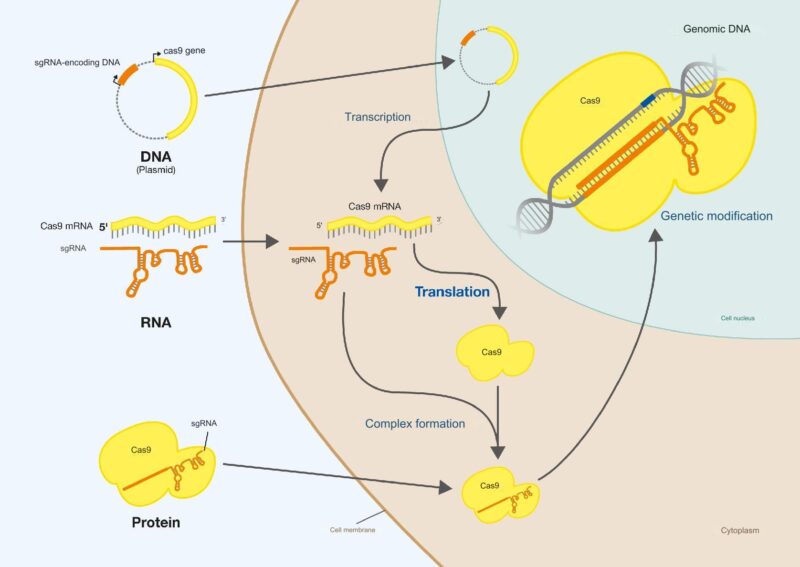CRISPR/Cas9 Delivery Methods
This subpage constitutes the fourth part of the theory for Biotech Academy’s material on CRISPR-Cas9.
In order to perform genetic modification, Cas9 and sgRNA must be introduced into cells through the cell membrane and enter the cell nucleus into the genomic DNA. This delivery can be done by different approaches. Cas9 can be introduced as coding DNA, mRNA or finished protein. sgRNA can be introduced directly into cells in RNA form, or can be encoded as DNA. If an insertion or replacement of a gene sequence is to be performed, the DNA template must also be introduced. The different methods by which the genetic modification system can be delivered have different advantages and disadvantages, and one must therefore choose the delivery method that best suits the given situation. The delivery of the genetic modification system can be done by designing a vector containing all components of the system. Such a vector is based on genetic material which has the function of coding the components and being able to deliver them together to the cells in which the modification is to take place.


